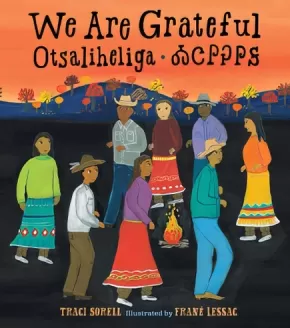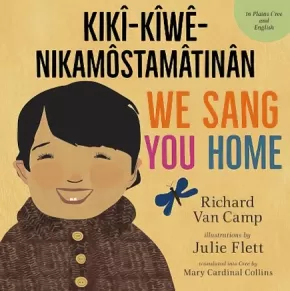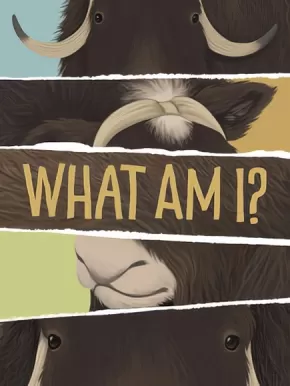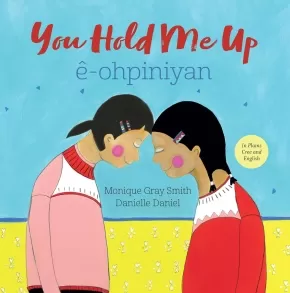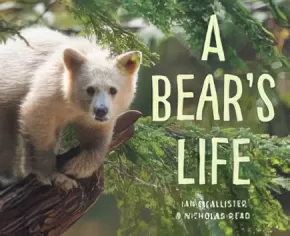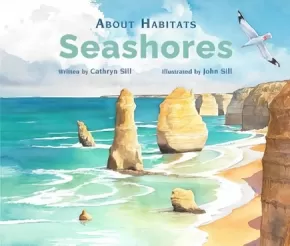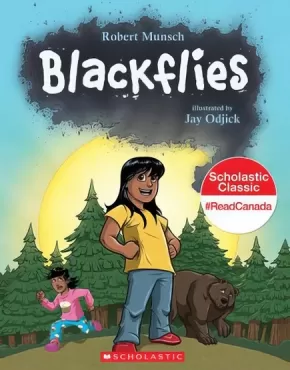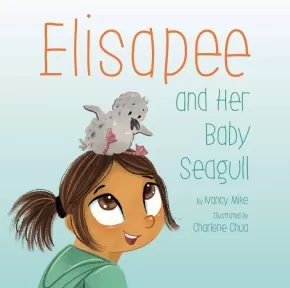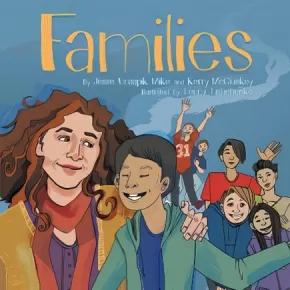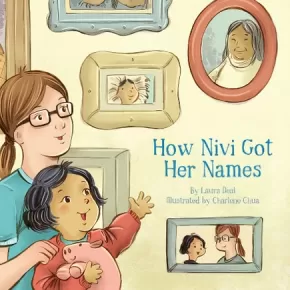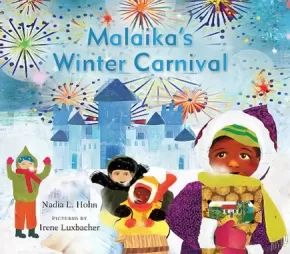
Picture Books
496
-
510
of
598 Results;
Sort By
Go To
of 40
Viola Desmond Won't Be Budged!
$9.95
Artists:
Format:
Paperback
ISBN / Barcode: 9781773060354
Synopsis:
Synopsis:
Viola Desmond was one brave woman! Now come on here, listen in close and I’ll tell you why …
In Nova Scotia, in 1946, an usher in a movie theater told Viola Desmond to move from her main floor seat up to the balcony. She refused to budge. Viola knew she was being asked to move because she was black. In no time at all, the police arrived and took Viola to jail. The next day she was charged and fined, but she vowed to continue her struggle against such unfair rules.
Viola’s determination gave strength and inspiration to her community at the time. She is an unsung hero of one of Canada’s oldest and most established black communities. Like Claudette Colvin and Rosa Parks, who many years later, in 1955, refused to give up their bus seats in Alabama, Desmond’s act of refusal awakened people to the unacceptable nature of racism and began the process of bringing an end to racial segregation in Canada.
Reviews
"Rudnicki’s vivid, dramatic art intensifies the danger that Desmond’s stubborn determination brought her, and it lends itself well to the warm recounting of the unnamed narrator.” — Booklist
“Varying perspectives heighten the emotional intensity, as do the excellent layout and design. This unique offering will be of particular value when studying women’s or black history.” — School Library Journal
“Desmond’s story should prove eye-opening to readers whose civil rights references are limited to American figures.” — Publishers Weekly
Educator Information
Recommended for ages 5-9.
An afterword provides a glimpse of African Canadian history.
The African Canadian community in Nova Scotia is one of Canada's oldest and most established black communities. Despite their history and contributions to the province the people in this community have a long experience of racially based injustice.
Additional Information
32 pages | 8.00" x 10.00"
We Are Grateful: Otsaliheliga
$21.99
Artists:
Format:
Hardcover
Text Content Territories:
Indigenous American; Native American; Cherokee; Cherokee Nation (Cherokee Nation of Oklahoma);
ISBN / Barcode: 9781580897723
Synopsis:
Synopsis:
The Cherokee community is grateful for blessings and challenges that each season brings. This is modern Native American life as told by an enrolled citizen of the Cherokee Nation.
The word otsaliheliga (oh-jah-LEE-hay-lee-gah) is used by members of the Cherokee Nation to express gratitude. Beginning in the fall with the new year and ending in summer, follow a full Cherokee year of celebrations and experiences. Written by a citizen of the Cherokee Nation, this look at one group of Native Americans is appended with a glossary and the complete Cherokee syllabary, originally created by Sequoyah.
Awards
- 2019 Sibert Honor Book
- NPR's Guide to 2018's Great Reads
- Kirkus Reviews Best Books of 2018
- 2018 Book Launch Award (SCBWI)
Reviews
"According to storyteller Sorell, the Cherokee people always express gratitude for the little things they are given by saying the phrase, "Otsaliheliga," or "we are grateful." Raised in the Cherokee Nation, Sorell intentionally crafts a narrative that simultaneously embraces modernity and a traditional presentation of Cherokee community and way of life. Throughout, the measured text reminds readers that in all things "we say otsaliheliga." Colorful, folk art-style illustrations show Cherokee people during ceremonies, in family gatherings large and small, and outdoors enjoying each of the four seasons, always expressing gratitude. The scenes are contemporary; one shows a father taking care of his children, engaging in a positive parenting role, while another depicts a family seeing off a relative who is leaving for deployment in the military, underscoring that Cherokee people serve their country. Children participate in rites and in family outings with adults, and they also play traditional games such as stickball and plant strawberries, a practice that reminds their people to embrace peace with one another. The variety of skin tones represented in the illustrations likewise depicts a present-day reflection of the diversity that exists within the Cherokee people. Occasional Cherokee words are written in Romanized form, phonetically, in Cherokee characters, and in English—a lovely grace note. A gracious, warm, and loving celebration of community and gratitude. —Kirkus Reviews
"An extended family engages with activities and traditions that express gratitude and carry on Cherokee history and culture, such as stomp dancing at the Great New Moon Ceremony, basket weaving, making corn-husk dolls, and playing stickball. The book underscores the importance of traditions and carrying on a Cherokee way of life while simultaneously incorporating modernity and challenging dated media images of Indigenous people. Here, a father sporting an earring and a topknot minds the children; a family bids goodbye to a clan relative who deploys with the U.S. military. Skin colors range from light to dark, visually underscoring the book’s message of diversity and inclusion. Staying firmly upbeat and idyllic, the cheerful, richly detailed gouache illustrations in bright, saturated colors cycle through the seasons, beginning with the Cherokee New Year in autumn. The text includes several Cherokee words; a line of text in a smaller font along the bottom of the page provides each word as written in the English alphabet, its phonetic pronunciation, the word as written in the Cherokee alphabet, and its definition. A glossary, an author’s note on Cherokee culture, and a complete Cherokee syllabary conclude this attractive and informative book." —Horn Book
"In Cherokee culture, Sorell shares, the expression of gratitude is part of daily life and extends from elaborate celebrations to struggles to ordinary life moments. She organizes her debut picture book by seasons, beginning with the fall, which is a time for collecting foliage for basket making and remembering those who suffered on the Trail of Tears. It also contains the Cherokee New Year and the Great New Moon Ceremony, a celebration of renewal and coming together. Each season section starts with the name of the season in Cherokee, an expression of gratitude for the change in nature, and subsequent pages describing community activities pertinent to that season. Lessac's folkloric illustration in bright gouache colors stands in pleasing contrast to the book’s contemporary feel and setting. The text reads like poetry but has a gentle instructional dimension to it. On many pages, Cherokee words are accompanied by English translations, pronunciation guides, and Cherokee syllabary. Back matter contains relevant explanations and provides good context, and the author's note sets past misrepresentations right" —Booklist
"This informative and authentic introduction to a thriving ancestral and ceremonial way of life is perfect for holiday and family sharing"—School Library Journal
Educator Information
Recommended for ages 3 to 7.
Also available in a boxed set as board books for ages 3 and under: We Are Grateful Otsaliheliga: Seasons (BB - Box Set)
Additional Information
| 32 pages | 9.88" x 10.00" |
We Sang You Home / Kiki Kîweh Nikamôstamâtinân (3 in stock, Out of Print)
$8.95
Artists:
Format:
Paperback
Text Content Territories:
Indigenous Canadian; First Nations; Cree (Nehiyawak);
ISBN / Barcode: 9781459820142
Synopsis:
Synopsis:
In this sweet and lyrical book from the creators of the bestselling Little You, gentle rhythmic text captures the wonder new parents feel as they welcome baby into the world. A celebration of the bond between parent and child, this is the perfect song to share with your little ones.
Internationally renowned storyteller and bestselling author Richard Van Camp teams up with award-winning illustrator Julie Flett for a second time to create a stunning book for babies and toddlers.
Educator Information
This paperback book is a dual-language (English and Plains Cree) edition of the We Sang You Home board book.
Available in hardcover: We Sang You Home (HC)
Recommended for Grades K-2 for the following subject areas: English Language Arts, Indigenous Language, Social Studies.
"We Sang You Home is a gentle story about a parent's unconditional love for a child. The lullaby-style story is a great way to share connections between young readers and their adults." — The Dalai Lama Center
Additional Information
Translated by Mary Collins.
Authenticity Note: The text and images in this story are meant to appeal to and honour a variety of families, not only Indigenous families. This edition's addition of the Cree translation makes it a wonderful resource for Indigenous language learning.
Welcome Song for Baby / Ni Nikamon ‘Tawâw Nipepîmis’
$6.95
Format:
Paperback
Text Content Territories:
Indigenous Canadian; First Nations; Cree (Nehiyawak);
ISBN / Barcode: 9781459820104
Synopsis:
Synopsis:
From renowned First Nations storyteller Richard Van Camp comes a lyrical lullaby for newborns. Complemented with stunning photographs, this evocative is perfectly suited as a first book for every baby.
Educator Information
This paperback book is a dual-language (English and Plains Cree) edition of the board book Welcome Song for Baby.
Recommended for Grades K-2 for these subjects: English Language Arts, Indigenous Language, Social Studies.
Additional Information
Translated by Mary Collins.
Authenticity Note: The images and text in this story are not specifically Indigenous. The addition of the Cree translation to this new edition, however, makes it a wonderful Indigenous language learning resource.
What Am I? - Nunavummi Reading Series
$7.95
Artists:
Format:
Paperback
Grade Levels: Preschool; Kindergarten;
ISBN / Barcode: 9781772668346
Synopsis:
Synopsis:
Can you guess what the animal is?
This book shows close-up illustrations of parts of an animal and asks readers to guess what the animal is.
Educator Information
This book is part of the Nunavummi Reading Series, a Nunavut-developed series that supports literacy learning while teaching readers about the people, traditions, and environment of the Canadian Arctic. It is a Level 5 book in the series.
Nunavummi Reading Series books have also been officially levelled using the Fountas & Pinnell Text Level Gradient™ Levelling System. This book's F&P Level is A.
Recommended for ages 3-5.
Additional Information
8 pages | 6.00" x 8.00"
What Arctic Animals Eat - Nunavummi Reading Series
$7.95
Format:
Paperback
ISBN / Barcode: 9781772668636
Synopsis:
Synopsis:
Find out what animals eat in the Arctic.
This book shows the different kinds of foods different Arctic animals eat.
Educator Information
This book is part of the Nunavummi Reading Series, a Nunavut-developed series that supports literacy learning while teaching readers about the people, traditions, and environment of the Canadian Arctic. It is a Level 6 book in the series.
Nunavummi Reading Series books have also been officially levelled using the Fountas & Pinnell Text Level Gradient™ Levelling System. This book's F&P Level is B.
Recommended for ages 4-6.
Additional Information
8 pages | 6.00" x 8.00"
You Hold Me Up / ê-ohpiniyan
$19.95
Artists:
Format:
Hardcover
Text Content Territories:
Indigenous Canadian; First Nations; Cree (Nehiyawak);
ISBN / Barcode: 9781459821750
Synopsis:
Synopsis:
This vibrant picture book, beautifully illustrated by celebrated artist Danielle Daniel, encourages children to show love and support for each other and to consider each other's well-being in their every-day actions.
Consultant, international speaker and award-winning author Monique Gray Smith wrote You Hold Me Up to prompt a dialogue among young people, their care providers and educators about Reconciliation and the importance of the connections children make with their friends, classmates and families. This is a foundational book about building relationships, fostering empathy and encouraging respect between peers, starting with our littlest citizens.
Reviews
"You Hold Me Up is a rhythmic story that reinforces for young readers about reconciliation and the importance of the connections children make with others. The story aims to encourage children to build relationships, foster empathy and encourage respect between peers while considering each other’s well-being in their everyday actions." — The Dalai Lama Center
Educator Information
This is a dual-language book in English and Plains Cree.
Recommended for Grades K-2 for the following subject areas: English Language Arts, Indigenous Language, Social Studies.
This book is also available in English only: You Hold Me Up
This book is available in a board book format in English for younger audiences: You Hold Me Up (BB)
This book is available in English and Anishinaabemowin: You Hold Me Up / Gimanaadenim
This book is also available in French: Tu es là pour moi
Additional Information
32 pages | 9.00" x 9.00"
A Bear's Life
$19.95
Format:
Hardcover
ISBN / Barcode: 9781459812703
Synopsis:
Synopsis:
Black bears, grizzly bears, and spirit bears all make their home in the Great Bear Rainforest. A Bear's Life uses Ian McAllister's stunning photographs to follow these beautiful animals through a year in the British Columbia wilderness—catching fish, eating berries, climbing trees and taking long naps.
Reviews
"The incredible close-up photos lead the reader from spring to fall in the rainforest as the easy-to-read text introduces each unique and special aspect of the bears' home...Impressive presentation. The writing style is especially inviting to younger readers...Hopefully this author-photographer duo still have more to offer all ages about British Columbia's endangered rainforest as a way to encourage conservation efforts. Highly Recommended." — CM Magazine, April 2017
"The heart of this album is [McAllister's] photography: two beautiful landscapes showing the pristine Great Bear Rainforest bookend many, many close-ups of bears…An appropriate companion to Wolf Island to nourish the sense of wonder." — Kirkus Reviews, May 2017
"Read emphasizes how much time it takes for cubs to learn survival skills from their mom and the importance of a balanced ecosystem…McAllister's close-up images of the creatures and the forest radiate with energy and atmosphere, in part because of the clean layout, which lets them shine…A title sure to be enjoyed over and over again. An easy pick for nonfiction animal collections." — School Library Journal, June 2017
"A Bear's Life is highly recommended for school and public libraries for study units and for story times. This book would enhance study units on bears, ecological systems, rainforests, indigenous mythology, the Raven, and photography." — Resource Links, October 2017
Educator & Series Information
A Bear's Life is the second book in the My Great Bear Rainforest series.
Books in this series include:
Wolf Island
A Bear's Life
The Seal Garden
A Whale's World
Recommended Ages: 5-8
Additional Information
32 pages | 10.75" x 8.75" | Hardcover (HC)
About Habitats: Seashores
$11.99
Artists:
Format:
Paperback
ISBN / Barcode: 9781682634028
Synopsis:
Synopsis:
Studying nature? Going to the beach? Dig into this classroom favorite and beginner's guide to seashores from the creators of the award-winning About Habitats series.
In this accessible introduction to a familiar locale, author and educator Cathryn Sill uses simple, easy-to-understand language to teach children about seashores and their diversity, the types of animals and plants that live there, and why they're important.
The stunning paintings by noted wildlife illustrator John Sill depict the wide variety of seashore topography.
A glossary and afterword provide more details about each seashore featured in the book. Perfect for early childhood and elementary units on nature, environment, and ecosystems.
Awards
- Outstanding Science Trade Books for Students K-12 —National Science Teachers Association, Children’s Book Council, 2018 (US)
Reviews
“Another excellent edition… The beautifully designed layout and succinct text combine with the back matter to offer very accessible nonfiction reading for the very young as well as early grade students.” —Kirkus Reviews
“With reliable information and attractive illustrations, this volume is a useful addition to a series celebrating its tenth year.” —Booklist
“Useful for introductory units on marine and earth science.” —School Library Journal
Educator & Series Information
With simple text and language, and strong picture support (paintings), this non-fiction narrative teaches children what seashores are and what kinds of animals and plants live there.
Recommended ages: 3-7
This book is a part of the About Habitats series, which introduces children to specific habitats and their living and nonliving components.
Additional Information
48 pages | 10.00" x 8.50" | Paperback
Blackflies
$7.99
Artists:
Format:
Paperback
Text Content Territories:
Indigenous Canadian; First Nations;
ISBN / Barcode: 9781443157919
Synopsis:
Synopsis:
Helen loves springtime - except for the gazillions of blackflies and mosquitoes. But she has a plan. . .
One day Helen wakes up and it's SPRING! The snow has melted and the sun is shining. But Helen knows that the blackflies will be coming out soon. So she does what any smart kid would do: she sends her little sister outdoors to check! When the blackflies and mosquitoes carry her away, Helen tells her dad, who rushes outside and is carried away himself. Now Helen needs to rescue BOTH of them, along with a wolf and a very clever bear. . .
Reviews
Munsch "uses a narrative shared with him by a First Nations family he met in Fort McMurray in 1996, and utilizes illustrations by First Nations artist Jay Odjick to help tell the story." - Andrea Smith, Windspeaker.com
Educator Information
Robert Munsch met Helen in Fort McMurray, where there are a lot of blackflies in the spring! Jay Odjick, an Algonquin artist, drew from his childhood experiences in illustrating this book: as a kid, he spent many hours indoors learning to draw as he hid from the blackflies and mosquitoes! Jay incorporated some First Nations decor and visuals to Helen's house and in his illustrations of her dad. Also fuzzy moose slippers, which he would love to own a pair of!
Recommended Ages: 3-8
This resource is also available in French: Vilains maringouins!
Additional Information
32 pages | 8.01" x 9.95"
Discovering Animals: English, French, Cree (PB)
$10.00
Artists:
Format:
Paperback
Text Content Territories:
Indigenous Canadian; First Nations; Cree (Nehiyawak);
Grade Levels: Preschool; Kindergarten;
ISBN / Barcode: 9781771604628
Synopsis:
Synopsis:
A new format for young readers transforms Neepin Auger’s bestselling board books into playful and colourful resources for elementary school children.
Neepin Auger’s colourful board books for infants have collectively sold well over 20,000 copies since they first appeared on the market. With more and more parents and educators looking for Indigenous resources, this paperback edition of Discovering Animals will bring the experience of learning French and Cree to a whole new group of early elementary school-aged kids.
In addition to the English words presented, the French and Cree equivalents are also given, along with pronunciation support, making these some of the most dynamic and useful picture books on the market, perfectly suitable for the classroom, library, and playroom.
Educator & Series Information
Recommended for ages 3 to 5.
This book is part of the Discovering series.
Additional Information
32 pages | 6.50" x 6.50" | Paperback
Elisapee and Her Baby Seagull
$14.95
Artists:
Format:
Paperback
Text Content Territories:
Indigenous Canadian; Inuit;
ISBN / Barcode: 9781772272932
Synopsis:
Synopsis:
When Elisapee’s father brings home a baby seagull, Elisapee falls in love with the bird right away. She feeds and cares for her new friend, named Nau, and even helps Nau learn how to fly! Nau grows, and grows, and grows some more, until she’s big enough to fly all over town and play with the other seagulls. Soon, it seems like Nau is ready to leave home for good, and Elisapee has to learn how to say goodbye. Based on the author’s childhood experience, this charming story about learning to care for animals will delight young readers.
Reviews
"Stories like Elisapee and Her Baby Seagull, which feature Inuit characters and communities in contemporary settings, allow young Inuit readers to see their own peers and neighborhoods represented in children’s books. They also allow young Canadians from other provinces to experience a vibrant part of our country that they might otherwise never be introduced to." - The Book Wars
Additional Information
40 pages | 8.75" x 8.75"
Families
$10.95
Artists:
Format:
Paperback
Text Content Territories:
Indigenous Canadian; Inuit;
ISBN / Barcode: 9781772271614
Synopsis:
Synopsis:
Talittuq is excited to start his first day of grade two. He is looking forward to the new school year, but as he meets his friends again for the first time after summer vacation, he notices that a lot of his friends’ families are very different from his own. Some have one mom and one dad, and some have only a mom. Some kids live with their grandparents. Some live with two dads or two moms. As Talittuq hears about all the fun his friends have had with their families, he learns that families come in many different shapes and sizes, and what holds them all together is love!
Educator Information
Ages 5-7.
Additional Information
28 pages | 8.50" x 8.50"
How Nivi Got Her Names
$13.95
Artists:
Format:
Paperback
Text Content Territories:
Indigenous Canadian; Inuit;
ISBN / Barcode: 9781772271379
Synopsis:
Synopsis:
Nivi has always known that her names were special, but she does not know where they came from. So, one sunny afternoon, Nivi decides to ask her mom how she got her names. The stories of the people Nivi is named after lead her to an understanding of traditional Inuit naming practices and knowledge of what those practices mean to Inuit.
How Nivi Got Her Names is an easy-to-understand introduction to traditional Inuit naming, with a story that touches on Inuit custom adoption.
Review
"Charlene Chua's gentle illustrations help to unify the concepts in the story quite clearly. The reader is able to grasp the concepts of Nivi's ancestry by viewing the photographs in the story of loving, smiling and welcoming namesakes of both Nova Scotian and Inuit relatives. I particularly like the illustrations that depict Nivi's namesakes surrounding her in circles of love and family. The messages of love, respect and identity are important ones and ultimately make How Nivi Got Her Names relatable to all children. It can be read as both a story and an information book, and it could be used effectively in classrooms to teach concepts of heritage, community, history and family." — CM Magazine
Additional Information
36 pages | 8.50" x 8.50"
Malaika's Winter Carnival (3 in stock) ON SALE
$15.25 $18.95
Artists:
Format:
Hardcover
ISBN / Barcode: 9781554989201
Synopsis:
Synopsis:
When Malaika moves to Canada, there’s a lot to get used to, especially Carnival in the wintertime!
Malaika is happy to be reunited with Mummy, but it means moving to Canada, where everything is different. It’s cold in Québec City, no one understands when she talks and Carnival is nothing like the celebration Malaika knows from home!
When Mummy marries Mr. Frédéric, Malaika gets a new sister called Adèle. Her new family is nice, but Malaika misses Grandma. She has to wear a puffy purple coat, learn a new language and get used to calling this new place home. Things come to a head when Mummy and Mr. Frédéric take Malaika and Adèle to a carnival. Malaika is dismayed that there are no colorful costumes and that it’s nothing like Carnival at home in the Caribbean! She is so angry that she kicks over Adèle’s snow castle, but that doesn’t make her feel any better. It takes a video chat with Grandma to help Malaika see the good things about her new home and family.
Nadia L. Hohn’s prose, written in a blend of standard English and Caribbean patois, tells a warm story about the importance of family, especially when adjusting to a new home.
Reviews
"Hohn contrasts Caribbean and Canadian cultures tenderly, with deep understanding of both, and she and Luxbacher have created a sweet, immersive and loving book that will benefit both young new arrivals to a country and those just meeting them." — Kirkus Reviews, July 2017
Educator Information
Recommended for ages 3 to 7.
Correlates to the Common Core State Standards in English Language Arts:
CCSS.ELA-LITERACY.RL.K.6
With prompting and support, name the author and illustrator of a story and define the role of each in telling the story.
CCSS.ELA-LITERACY.RL.1.2
Retell stories, including key details, and demonstrate understanding of their central message or lesson.
Additional Information
36 pages | 10.00" x 9.00" | Hardcover
Sort By
Go To
of 40



